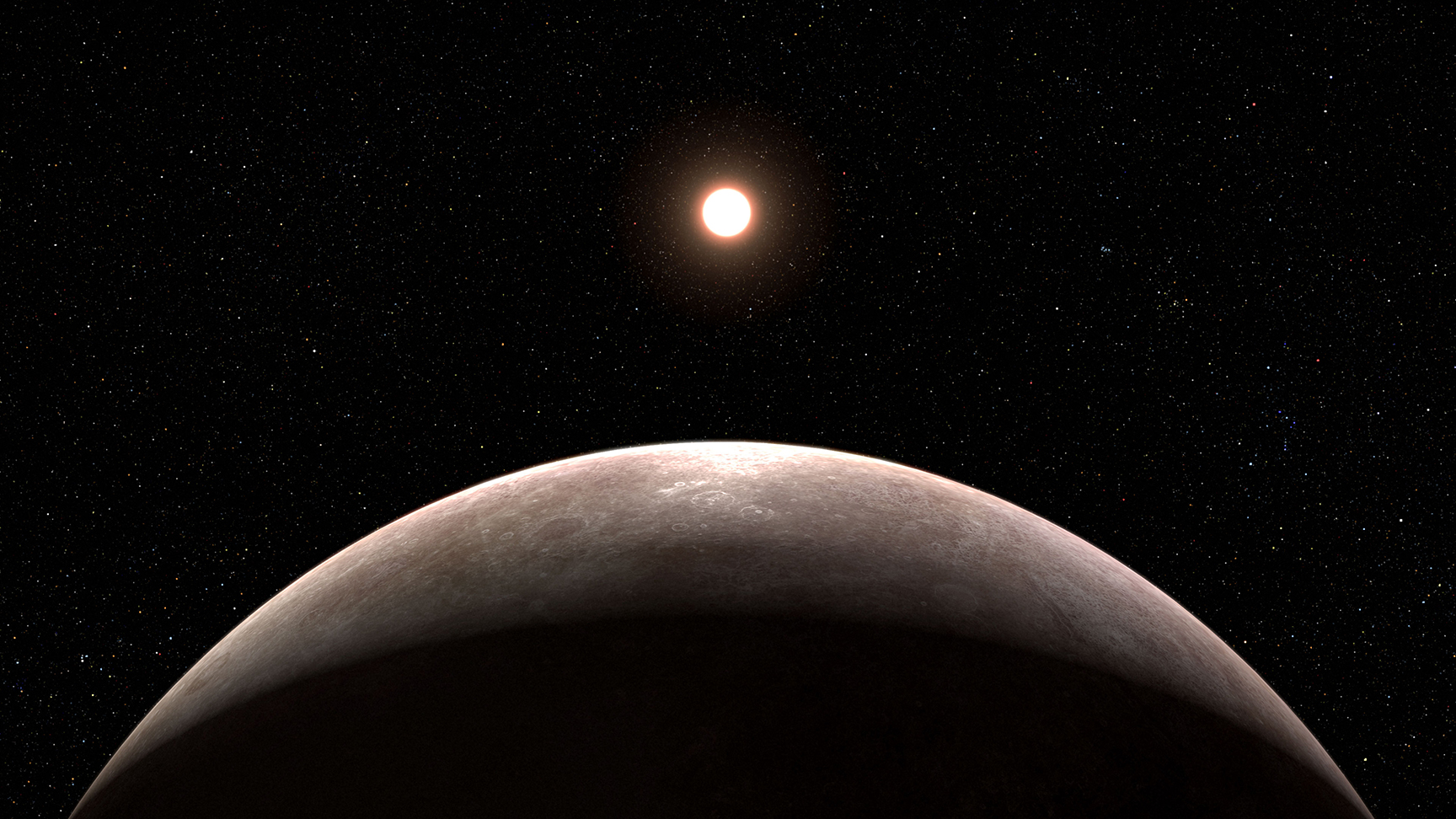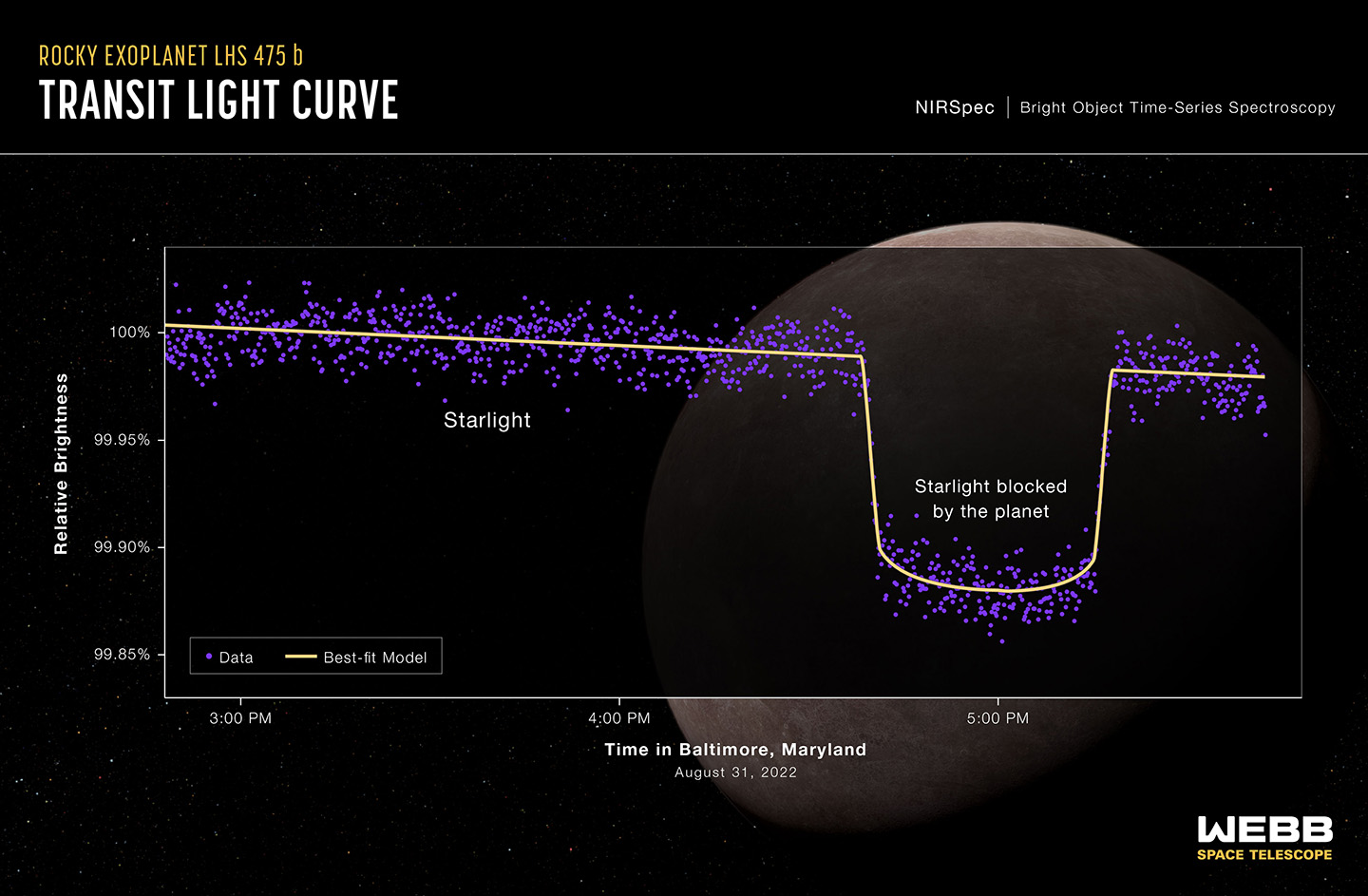Image List
-

Based on new evidence from NASA's JWST, this illustration reflects that exoplanet LHS 475 b is rocky and almost precisely the same size as Earth. The planet whips around its star in just two days, far faster than any planet in the Solar System. Researchers will follow up this summer with additional observations with JWST, which they hope will allow them to definitively conclude if the planet has an atmosphere. LHS 475 b is relatively close, 41 light-years away, in the constellation Octans. Credit: NASA, ESA, CSA, L. Hustak (STScI)
Credit: NASA, ESA, CSA, L. Hustak (STScI) -

How do researchers spot a distant planet? By observing the changes in light as it orbits its star! A light curve from NASA's JWST Near-Infrared Spectrograph (NIRSpec) shows the change in brightness from the LHS 475 star system over time as the planet transited the star on August 31, 2022. LHS 475 b is a rocky, Earth-sized exoplanet that orbits a red dwarf star roughly 41 light-years away, in the constellation Octans. The planet is extremely close to its star, completing one orbit in two Earth-days. The planet’s confirmation was made possible by JWST's data.
Credits: NASA, ESA, CSA, L. Hustak (STScI); Science: K. Stevenson, J. Lustig-Yaeger, and E. May (Johns Hopkins University Applied Physics Laboratory)